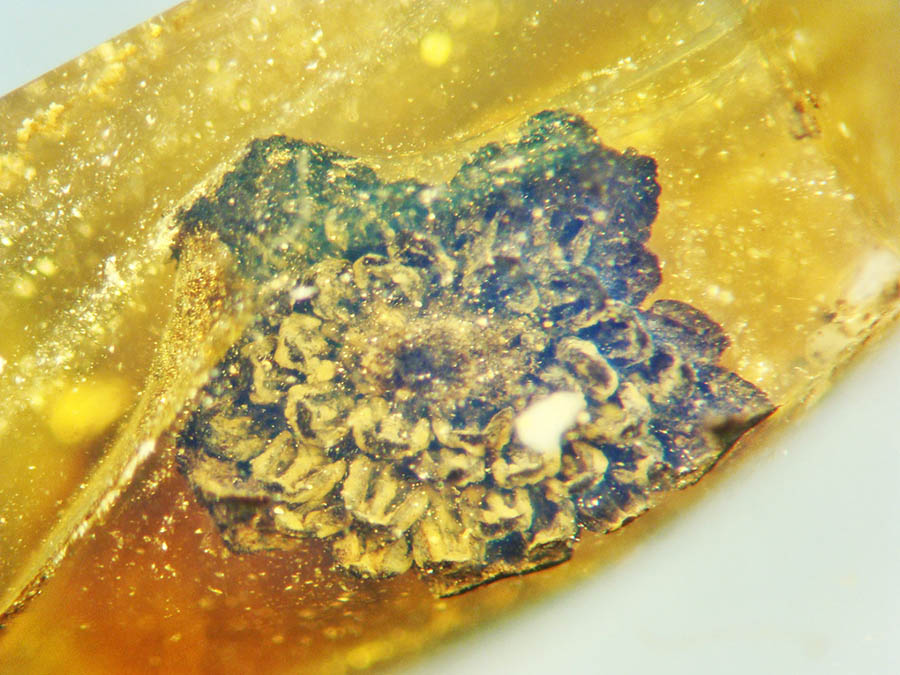99-Million-Year-Old Fossil Flower Found Encased in Burmese Amber

A team of paleontologists from Oregon State University and the Agricultural Research Service of the U.S. Department of Agriculture has found a new genus and species of fossil angiosperm in the mid-Cretaceous amber deposits of Myanmar.
The new fossil flower, named Valviloculus pleristaminis, belongs to the order Laurales, its closest affinities being with the families Monimiaceae and Atherospermataceae.
“This isn’t quite a Christmas flower but it is a beauty, especially considering it was part of a forest that existed almost 100 million years ago,” said lead author Professor George Poinar Jr., a paleontologist in the Department of Integrative Biology at Oregon State University.
“The male flower is tiny, about 2 mm across, but it has some 50 stamens arranged like a spiral, with anthers pointing toward the sky.”
“A stamen consists of an anther (pollen-producing head) and a filament (stalk that connects the anther to the flower).”
“Despite being so small, the detail still remaining is amazing.”
“Our specimen was probably part of a cluster on the plant that contained many similar flowers, some possibly female.”

The specimen of Valviloculus pleristaminis has an egg-shaped, hollow floral cup (part of the flower from which the stamens emanate); an outer layer consisting of six petal-like components known as tepals; and two-chamber anthers, with pollen sacs that split open via laterally hinged valves.
It became encased in amber on the supercontinent of Gondwana and rafted on a continental plate some 6,450 km (4,000 miles) across the ocean from Australia to Southeast Asia.
Geologists have been debating just when this chunk of land — known as the West Burma Block — broke away from Gondwana.
Some scientists believe it was 200 million years ago; others claim it was more like 500 million years ago.
“Since angiosperms only evolved and diversified about 100 million years ago, the West Burma Block could not have broken off from Gondwana before then, which is much later than dates that have been suggested by geologists,” Professor Poinar said.
The discovery is described in a paper in the Journal of the Botanical Research Institute of Texas.
_____
G.O. Poinar, Jr. et al. 2020. Valviloculus pleristaminis gen. et sp. nov., a Lauralean fossil flower with valvate anthers from mid-Cretaceous Myanmar amber. Journal of the Botanical Research Institute of Texas 14 (2): 359-366; doi: 10.17348/jbrit.v14.i2.1014
Source: www.sci-news.com/








